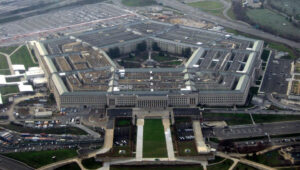
WASHINGTON: The most overlooked story of 2020, including by this publication, is that having a president, Donald Trump, largely divorced from making military decisions worked pretty well for the US military.
What do I mean? President Trump loved to point to “my generals” as if this marked some special genius on his part (many senators might not agree about to whom they belong) but he appeared to exercise a very light touch on the vast majority of important military decisions, especially budgetary ones. He rarely weighed in on operational and military policy decisions; when he did he often reversed them within days and the Pentagon often ignored him. (One good example — threatening NATO allies really didn’t make much difference to how they or we actually behaved. Every NATO member had promised to increase military spending long before Trump was elected).
Perhaps Trump’s most lasting legacy will be growth in the Pentagon’s research and development spending. I give defense consultant Loren Thompson full marks for pointing out how much the budget increased in the last four years:
“Trump increased the Pentagon budget 20% over four years, but the growth was not evenly distributed between readiness, force structure and investment. The big gainer was research and development, which in nominal terms rose 49% (emphasis added) between Obama’s last defense request and the Trump 2021 request. This enabled all three military departments to develop next-generation weapons while actively pursuing disruptive technologies such as unmanned submarines and hypersonic weapons.”
I would give more of the credit to Pentagon budgeteers and to Congress. Lawmakers, especially, substantially built their own defense budgets during the Trump regime.
Broadly, Loren says that:
“Trump has done more in four years to shift the vector of U.S. military preparations than most presidents accomplish in eight. The fact that he did this while the nation was at peace is remarkable. The fact that he often did not know the details of how his defense strategy was being implemented is beside the point (few presidents do).”
It’s certainly true that presidents personally approve few defense policy decisions during their time in office, but their people in the Office of Management and Budget and on the National Security Council keep a close eye on such things and they get guidance from senior White House officials. But, under Trump, because of the near-constant turmoil at the NSC and because of his apparent reverence for “his generals,” people at the Pentagon got to make a lot of very important decisions without much fiddling from the White House.

President Trump and Defense Secretary Jim Mattis
The best example is the National Defense Strategy crafted on Trump’s watch, which is likely to guide the American military for some time. It was personally shaped and, to some degree, written by Jim Mattis, the retired Marine general who oversaw the Pentagon until he could no longer accept President Trump’s treatment of our closest allies and partners. It was the first NDS in a decade and was developed with NSC coordination, but was very much Mattis’ creation.
Another whopper of a story that didn’t get much coverage was the final and welcome end of the Budget Control Act. A badly conceived bill that reflected how broken America’s politics had become, the BCA haunted Pentagon budgeteers, especially when in 2013 the Navy had to cancel or delay some planned ship deployments, which the GAO found resulted in a 10 percent decrease in American deployed forces worldwide.
The third big overlooked story this year was the Trump administration push to bring NASA, a civilian agency, into closer relations with the military. This may be akin to what happened with the Royal Navy, which grew like topsy as it strove to protect British shipping to and from its fast-flung colonies. In this case, the Trump administration crafted an MOU between NASA and the Space Force that, as Theresa wrote, “more firmly pins the US military to future missions in the vast region of space beyond Earth’s orbit.
In announcing the MOU, NASA Administrator Jim Bridenstine said that, “given the challenges that exist in space, it is necessary to have security. And that’s why it is so important for NASA to to work side by side with with the Space Force.”

Gen. Jay Raymond, Space Force chief
The head of Space Force, Gen. Jay Raymond, made it explicit in an email to Theresa that “commercial investments and new technologies have the potential to expand the reach of vital national space interests to cislunar and beyond in the near future. It is our responsibility to maintain US advantages in space. If and when that extends beyond the GEO belt, we will go beyond as needed.”
All that is shades of Alfred Thayer Mahan, the great 19th century American strategist, who argued to great effect that America’s rise to greatness depended on a navy that, in part, protected our global commerce. It is an issue of great import and one well worth watching over the next four years.






















